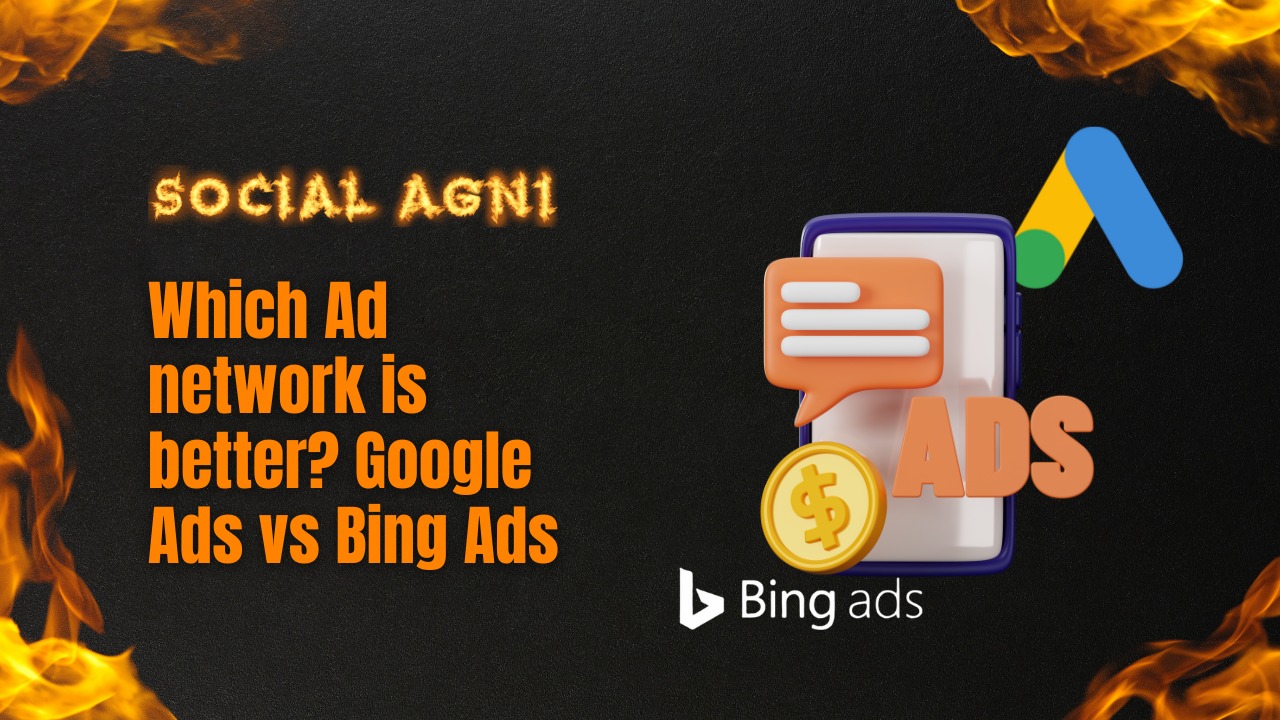Online advertising is now essential to every effective marketing plan. With millions of businesses competing for consumer attention, reaching the appropriate audience at the right moment has never been more vital. Google and Bing Ads dominate online advertising. Targeted advertisements on SERPs and partner websites allow businesses to reach potential clients. Google Ads is the clear leader in internet advertising. Google Ads leads digital advertising with a huge market share and wide reach. Advertisers may target demographics, interests, and search intent to reach highly relevant audiences. Google advertisements let companies customize their advertising campaigns using text, display, video, and e-commerce advertisements. Bing Ads, powered by Microsoft, may not be as dominant as Google Ads, but it has consistently grown its user base and market share. Bing Ads offers marketers a diverse demographic, which may be beneficial depending on the business. Demographics, location, and device targeting allow firms to reach people who may be more receptive to their products. This article compares Google Ads vs Bing Ads, highlighting their pros and cons. Reach, market share, targeting, pricing, budget, ad formats, display networks, performance monitoring and analytics, user experience, and customer service will be examined. Businesses may choose an ad network that matches their advertising aims and audience by examining these factors. Google Ads and Bing Ads are not necessarily superior. Based on business goals, target market, and budget, choose. Businesses may maximize advertising investments and target the correct audience by understanding each platform’s characteristics and benefits. Reach and Market Share Google Ads leads internet advertising in reach and market share. Google Ads provides unique access to a big audience because of its massive user base and search engine supremacy. Businesses may contact prospective clients through Google’s billions of daily searches. Google has an estimated 92% worldwide search engine market share. Google is used by most internet users, giving advertisers a huge pool of prospective clients. Google Ads lets companies choose keywords and rank high in search results, improving visibility and traffic. However, Microsoft’s Bing Ads has continuously grown its user base and market share. Bing still dominates the search engine industry, especially in specific demographics and countries, even though it is not as widespread as Google Ads. Bing has a 2-3% worldwide search market share. Bing’s reduced market share might benefit companies. Bing has a greater percentage of users over 35. In the US and UK, Bing’s market share is higher. Thus, Bing Ads may benefit specialized markets or demographic-targeted enterprises. Google Ads dominates reach and market share due to its worldwide user base. Bing Ads may benefit companies depending on their target audience, regional preferences, and demographics. To choose an ad network, businesses must undertake market research and analyze their aims and target market. Targeting Capabilities Online advertising requires targeting particular consumers. Advertisers may target their ideal customers using Google Ads and Bing Ads. Each platform’s targeting capabilities: Google Ads Google Ads lets advertisers target their audiences with a wide range of possibilities. Google Ads targets these: Keywords: Businesses can target relevant keywords. Google advertising can display certain keywords. Demographics: Advertisers can target by age, gender, parenting status, and family income. Interests and Remarketing: Google Ads lets marketers target consumers based on their interests and past website or app engagements. Remarketing shows adverts to previous site visitors, improving conversion rates. Location: Advertisers may target consumers by country, city, or postal code. Devices: Google Ads helps marketers target computers, smartphones, and tablets based on campaign goals and audience preferences. Bing Ads Bing Ads has several useful targeting choices, but not as many as Google Ads. Bing Ads targeting features include: Keywords: Like Google advertisements, marketers may select keywords to show their advertisements when Bing users search for them. Demographics: Bing Ads allows targeting by age, gender, and location. Location: Advertisers may target consumers in specific geographic places to focus on certain regions. Devices: Bing Ads targets computers, smartphones, and tablets. Both systems allow marketers to target demographics, interests, and search intent, but Google Ads offers greater possibilities. Bing Ads can still benefit firms targeting certain demographics or places where Bing is more prevalent. Advertising platforms should be chosen based on the target audience, campaign goals, and budget. Market research and audience preferences can assist evaluate whether an ad network’s targeting capabilities match the business’s advertising aims. Cost and Budget Cost and budget impact internet advertising campaign success. Advertisers only pay for clicks on Google Ads and Bing Ads. Let’s compare platform prices: Google Ads Google Ads, the biggest online advertising platform, has higher average CPC prices than Bing Ads. Industry competition, keyword demand, and ad quality affect Google Ads CPC prices. Finance and insurance have higher CPC rates than other businesses. Google Ads provides manual and automatic bidding tactics including target CPA and improved CPC. Advertisers can select their maximum click bid and budget. Quality Score, a Google Ads tool, assesses ad relevancy, landing page experience, and predicted click-through rate. Higher Quality Scores can cut CPC prices and improve ad placements, helping marketers optimize budgets and outcomes. Bing Ads Bing Ads offers lower CPC rates than Google Ads. Bing Ads may be cheaper for marketers, especially in low-competition industries. Bing Ads provides manual and automatic bidding tactics like targeting CPA and maximizing clicks. Advertisers may manage expenditures by setting bids and budgets. Bing Ads’ CPC prices are cheaper than Google’s, but Bing has less reach and search volume. The decreased cost per click must be weighed against prospective traffic and customer differences. When choosing between Google Ads and Bing Ads, advertisers should consider budget, competitiveness, and goals. For firms seeking a wide audience, Google Ads’ higher CPC rates and the possibility of more visitors may be worth it. However, Bing Ads may save specialized companies money. Start with a test budget and thoroughly watch advertising on both platforms to identify the best resource allocation. Campaign optimization and monitoring help advertisers make educated decisions and optimize advertising ROI. Ad Formats and Display Network Google Ads and Bing Ads’ ad formats and
